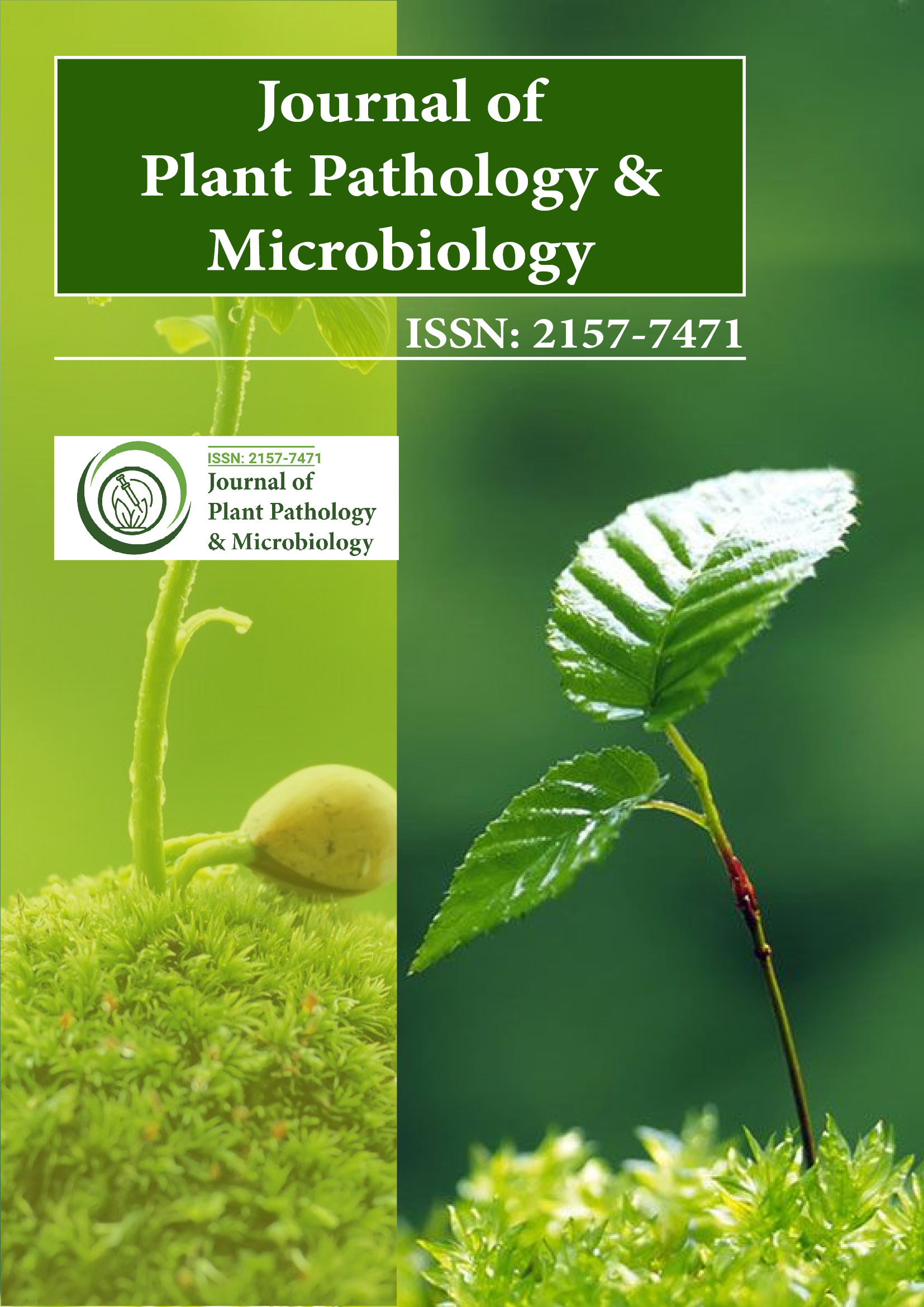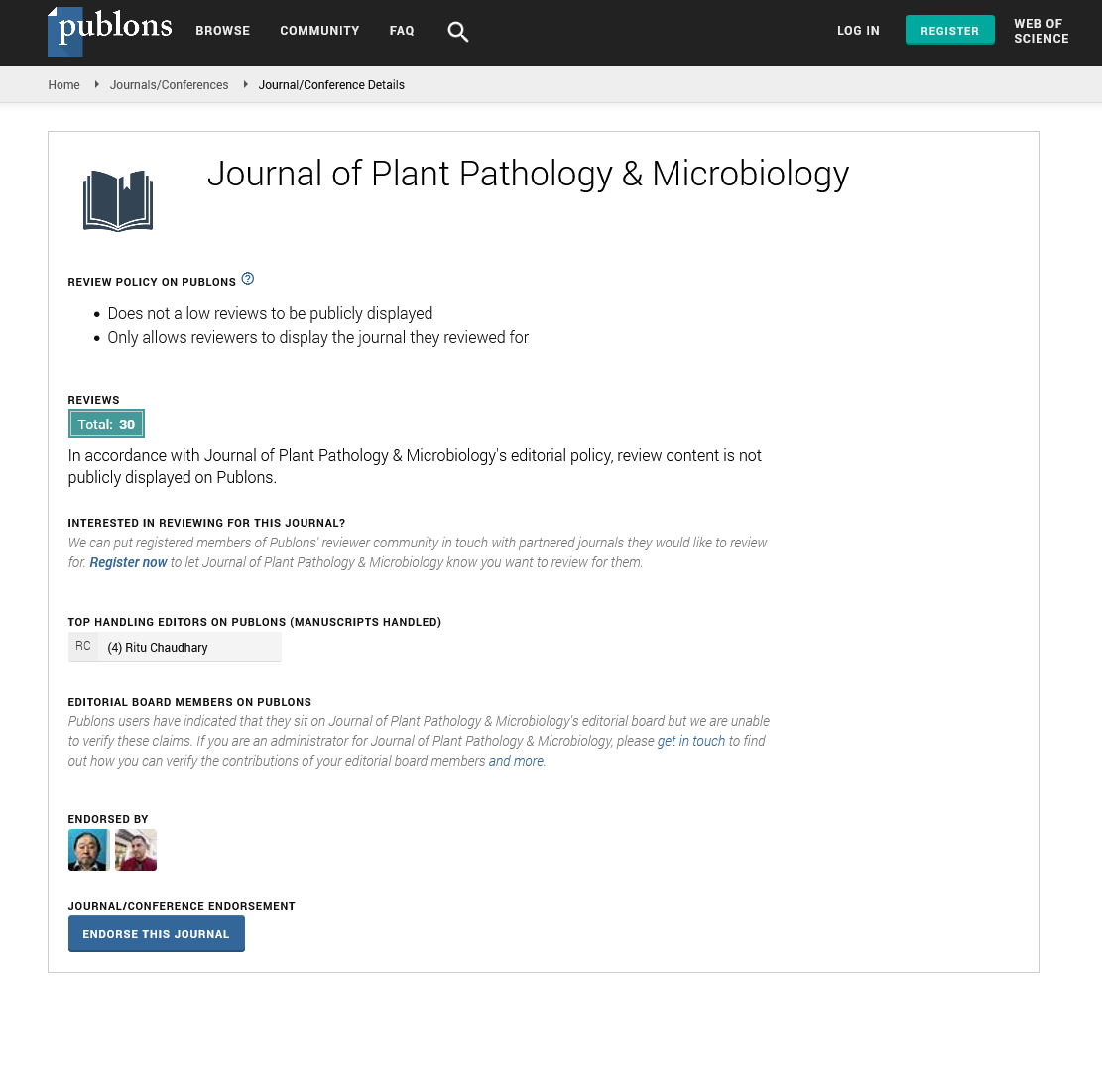Indexed In
- Open J Gate
- Genamics JournalSeek
- Academic Keys
- JournalTOCs
- CiteFactor
- Ulrich's Periodicals Directory
- Access to Global Online Research in Agriculture (AGORA)
- Electronic Journals Library
- Centre for Agriculture and Biosciences International (CABI)
- RefSeek
- Directory of Research Journal Indexing (DRJI)
- Hamdard University
- EBSCO A-Z
- OCLC- WorldCat
- Scholarsteer
- SWB online catalog
- Virtual Library of Biology (vifabio)
- Publons
- Geneva Foundation for Medical Education and Research
- Euro Pub
- Google Scholar
Useful Links
Share This Page
Journal Flyer

Open Access Journals
- Agri and Aquaculture
- Biochemistry
- Bioinformatics & Systems Biology
- Business & Management
- Chemistry
- Clinical Sciences
- Engineering
- Food & Nutrition
- General Science
- Genetics & Molecular Biology
- Immunology & Microbiology
- Medical Sciences
- Neuroscience & Psychology
- Nursing & Health Care
- Pharmaceutical Sciences
Perspective - (2025) Volume 16, Issue 2
Fungal Pathogen Preferences for Specific Plant Organs in Disease Development
Jin Yong Kim*Received: 26-May-2025, Manuscript No. JPPM-25-29743; Editor assigned: 28-May-2025, Pre QC No. JPPM-25-29743 (PQ); Reviewed: 11-Jun-2025, QC No. JPPM-25-29743; Revised: 18-Jun-2025, Manuscript No. JPPM-25-29743 (R); Published: 25-Jun-2025, DOI: 10.35248/2157-7471.25.16.756
Description
Fungal pathogens exhibit varying degrees of specificity when infecting plant organs. While much of the research in plant pathology has focused on host-pathogen compatibility at the species or genotype level, a finer level of interaction occurs at the organ level. Some fungi preferentially colonize leaves, stems, roots, or reproductive tissues, even within the same host plant. In non-host species, organ-specific resistance often restricts fungal establishment, adding complexity to our understanding of plant immunity.
Plants, like animals, possess distinct organs with specialized structures and functions. Leaves carry out photosynthesis, roots absorb nutrients, stems provide structural support, and reproductive tissues ensure species continuity. Fungal pathogens have evolved diverse strategies to infect these organs, yet their interactions are often restricted to particular tissues.
Organ specificity is the phenomenon where a fungal pathogen preferentially targets specific organs of a plant, even when other organs are theoretically susceptible. This specificity is observed across both host and non-host species. Understanding organ specificity offers insights into how plant immunity operates at multiple levels and can guide breeding and protection strategies against tissue-targeted diseases.
Organ specificity in fungal infections
Organ specificity refers to the selective infection of certain plant parts by a fungal pathogen, often influenced by the organ’s physiology, biochemical defenses, and exposure. For instance, Blumeria graminis targets leaves of cereals but rarely affects roots or stems. Similarly, Fusarium oxysporum infects vascular tissues, leading to wilt symptoms but does not typically affect leaves directly.
This specificity can be absolute or relative. Absolute specificity implies exclusive infection of one organ type, while relative specificity suggests a strong preference for certain organs, with occasional colonization of others. These interactions are driven by a combination of pathogen specialization and organ-specific defense systems in the plant.
Many postharvest pathogens, including Botrytis cinerea and Monilinia fructicola, exhibit strong preferences for flowers and fruits. These organs often have lower structural defenses and higher sugar content, favoring fungal proliferation.
Organ specificity in non-host plants
Non-host resistance is the ability of a plant species to resist infection by a pathogen that normally infects another species. Interestingly, in some non-hosts, fungal pathogens may still attempt entry and even colonize certain organs, although without completing their lifecycle.
In Arabidopsis, a non-host for Puccinia striiformis, limited hyphal development can be observed on the leaves, but no disease symptoms or spore production follow. However, roots may support minimal growth of other rust fungi under controlled conditions, revealing tissue-dependent interactions even in non-host scenarios.
Each organ hosts distinct microbial communities. The leaf surface, or phyllosphere, is colonized by bacteria and fungi that may compete with or inhibit pathogens. Similarly, the rhizosphere contains beneficial microbes that can protect roots from infection.
These microbial communities contribute to the organ’s resistance or susceptibility by occupying niches, producing antimicrobial metabolites, or inducing systemic resistance.
Evolutionary and ecological perspectives
From an evolutionary viewpoint, organ specificity reflects adaptation by pathogens to optimize resource acquisition and reproduction. Fungi may specialize in organs that provide the best balance between nutrient access and immune evasion.
On the host side, differential investment in defense across organs reflects trade-offs between protection and resource allocation. For example, reproductive tissues are often prioritized due to their role in fitness, while senescing leaves may receive less defense investment.
Organ specificity in fungal pathogenesis is a complex and underexplored aspect of plant-microbe interactions. Fungal pathogens often show preferences for particular plant tissues based on entry mechanisms, nutrient availability, immune responses, and environmental context. Both host and non-host plants exhibit varying resistance profiles across their organs, indicating that plant defense is more nuanced than previously considered. A better understanding of organ-specific dynamics can inform targeted strategies for breeding, treatment, and field management to reduce disease impact.
Citation: Kim JY (2025). Fungal Pathogen Preferences for Specific Plant Organs in Disease Development. J Plant Pathol Microbiol. 16:756.
Copyright: © 2025 Kim JY. This is an open-access article distributed under the terms of the Creative Commons Attribution License, which permits unrestricted use, distribution, and reproduction in any medium, provided the original author and source are credited.

